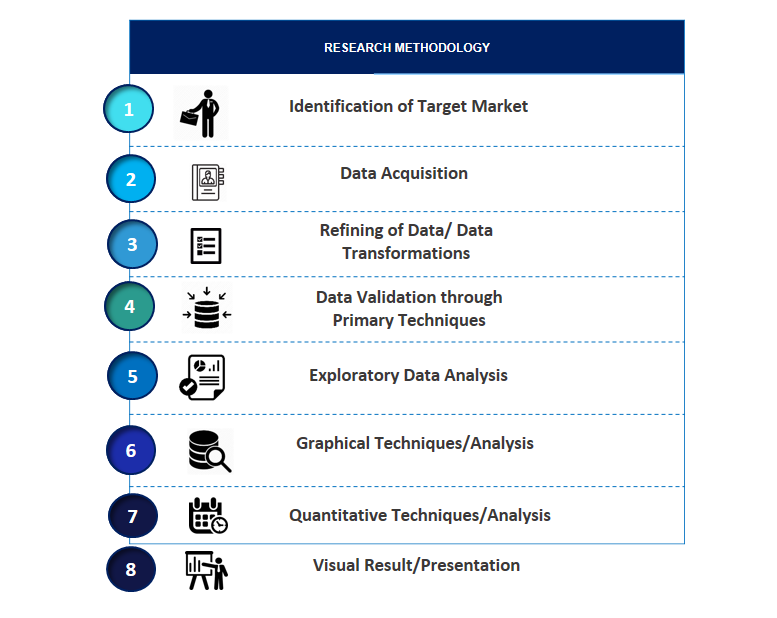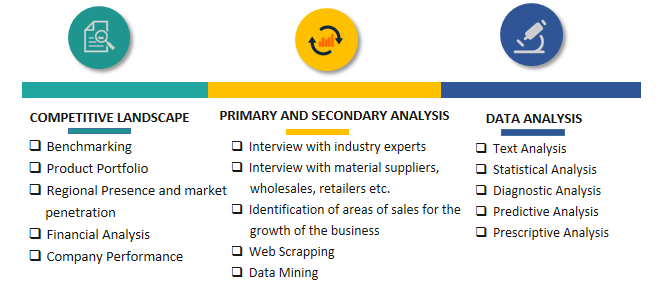Global Leather Dyes & Chemicals Market Overview
According to SPER Market Research, the Global Leather Dyes & Chemicals Market is estimated to reach USD 14.44 billion by 2032 with a CAGR of 7.03%.
Chemicals and leather dyes, which have an affinity for leather, are used to colour leather goods. Acid, medium, direct, and basic dyes can all be used on leather goods. Neutral dyes are the most popular dyes used for spray colouring. The leather dye and chemical must be just minimally soluble in water, but they dissolve readily in organic solvents such ethanol, diethyl sulphate, and dimethylformamide. It is mostly used to spray-color leather, including sheepskin, cowhide, and pigskin. The representation of leather chemical is responsible for the essential revolutionary range that offers your leather a competitive edge. There aren't enough lubricants present when leather is finished being tanned to keep it from drying up and becoming a hard mass. Every light leather requires more flexibility and suppleness than tannage can provide. A solvent like benzene is used to dilute the oil since it is less expensive, safer, and more practical to employ the emulsification method. This allows a tiny amount of oil to spread evenly over the huge surface of leather fibre. The raw resources for these industrial enterprises are chemicals and leather dyes. Since they both share the majority of the same ingredients, such as alcohol, a mineral spirit, or water, this leather dyes like wood dyes. Leather dye can be used to stain wood without requiring more work than staining with a solution designed for wood. Use a painter's stick to evenly apply leather dye, making sure that the colour that has collected on the container's bottom combines with the water, alcohol, or mineral spirit base.
-01032001022023.jpg)
Impact of COVID-19 on the Global Leather Dyes & Chemicals Market
The harmful effects of the COVID-19 outbreak on people's health are felt all across the world. The aftermath has a negative impact on people all over the world in terms of social and economic considerations. As the major governments implement new frameworks and industries employ cutting-edge expansion strategies to maintain their relevance, people are suffering from a variety of emotional traumas. The majority of countries' transit limitations and lockdowns have had a catastrophic effect on the leather industry. As a result, fewer different leather chemicals and ingredients are being produced. The COVID-19 epidemic has had a detrimental impact on the world economy and led to a subsequent fall in global GDP, affecting consumer purchasing habits. Travel restrictions have been put in place to stop the virus's spread. These restrictions have decreased the supply of raw materials needed to produce leather, which has had a negative impact on the market's expansion throughout the epidemic. Due to COVID-19, fewer leather products are exported and less chemicals are used in their production. The expansion of the leather chemicals industry has also been impeded by the temporary closure of leather producing plants. The manufacture of leather dyes and chemicals, which are extensively utilised in the automobile and fashion industries, has suffered from a lack of manpower, interruption of logistical services, and delayed shipments. Thus, the leather chemicals market's growth has been constrained by the decline in demand for leather dyes and chemicals from significant users like the automotive industry.
-01031501022023.jpg)
Scope of the Report:
| Report Metric | Details |
| Market size available for years | 2019-2032 |
| Base year considered | 2021 |
| Forecast period | 2022-2032 |
| Segments covered | By Product Type, By Application, By Type of Leather Dyes, By Type of Leather Chemicals, By Leather Chemicals Processing
|
| Regions covered | Asia-Pacific, Europe, Middle East & Africa, North America, Latin America
|
| Companies Covered | BASF, Bayer AG, Brother Enterprises, Chemtan Company Inc., Dowell Science Technology, DyStar, Elementis plc., Lanxess AG, Lawrence Industries Limited, Schill and Seilacher, Sichuan Decision Chemical, Sisecam, Stahl International B.V, Texapel, Trumpler, Zschimmer & Schwarz
|
Global Leather Dyes & Chemicals Market Segmentation:
1. By Product Type:
- Beamhouse Chemicals
- Fat liquors
- Finishing Agent
- Syntans
- Others
2. By Application:
- Bags Manufacturing Industry
- Leather Industry
- Shoes Manufacturing Industry
3. By Type of Leather Dyes:
- Acid Dyes
- Basic Dyes
- Direct Dyes
- Mordant Dyes
- Pre-metaled Dyes
- Sulphur Dyes
- Others
4. By Type of Leather Chemicals:
- Biocides
- Chromium Sulphate
- Polyurethane Resins
- Sodium Bicarbonate
- Surfactants
5. By Leather Chemicals Processing:
- Beamhouse
- inishing Chemicals
- Tanning & Dyeing
6. By Region:
- Asia-Pacific
- Australia
- China
- India
- Japan
- South Korea
Key Topics Covered in the Report:
- Size of Global Leather Dyes & Chemicals Market (FY’2019-FY’2032)
- Overview of Global Leather Dyes & Chemicals Market
- Segmentation of Global Leather Dyes & Chemicals Market By Product Type (Beamhouse Chemicals, Fat liquors, Finishing Agent, Syntans, Others)
- Segmentation of Global Leather Dyes & Chemicals Market By Application (Bags Manufacturing Industry, Leather Industry, Shoes Manufacturing Industry)
- Segmentation of Global Leather Dyes & Chemicals Market By Type of Leather Dyes (Acid Dyes, Basic Dyes, Direct Dyes, Mordant Dyes, Pre-metaled Dyes, Sulphur Dyes, Others)
- Segmentation of Global Leather Dyes & Chemicals Market By Type of Leather Chemicals (Biocides, Chromium Sulphate, Polyurethane Resins, Sodium Bicarbonate, Surfactants, Others)
- Segmentation of Global Leather Dyes & Chemicals Market By Leather Chemicals Processing (Tanning & Dyeing, Beamhouse, Finishing Chemicals)
- Statistical Snap of Global Leather Dyes & Chemicals Market
- Growth Analysis of Global Leather Dyes & Chemicals Market
- Problems and Challenges in Global Leather Dyes & Chemicals Market
- Competitive Landscape in the Global Leather Dyes & Chemicals Market
- Impact of COVID-19 and Demonetization on Global Leather Dyes & Chemicals Market
- Details on Recent Investment in Global Leather Dyes & Chemicals Market
- Competitive Analysis of Global Leather Dyes & Chemicals Market
- Major Players in the Global Leather Dyes & Chemicals Market
- SWOT Analysis of Global Leather Dyes & Chemicals Market
- Global Leather Dyes & Chemicals Market Future Outlook and Projections (FY’2019-FY’2032)
- Recommendations from Analyst
1.Introduction
1.1. Scope of the report
1.2. Market segment analysis
2. Research Methodology
2.1 Research data source
2.1.1 Secondary data
2.1.2 Primary data
2.1.3 SPER’s internal database
2.1.4 Premium insight from KOL’s
2.2Market size estimation
2.2.1 Top-down and Bottom-up approach
2.3Data triangulation
3. Executive Summary
4. Market Dynamics
4.1. Driver, Restraint, Opportunity and Challenges analysis
4.1.1Drivers
4.1.2Restraints
4.1.3Opportunities
4.1.4Challenges
4.2. COVID-19 Impacts of the Global Leather Dyes & Chemicals Market
5. Market variables and outlook
5.1. SWOT analysis
5.1.1 Strengths
5.1.2 Weaknesses
5.1.3 Opportunities
5.1.4 Threats
5.2. PESTEL analysis
5.2.1 Political landscape
5.2.2 Economic landscape
5.2.3 Social landscape
5.2.4 Technological landscape
5.2.5 Environmental landscape
5.2.6 Legal landscape
5.3. PORTER’S five forces analysis
5.3.1 Bargaining power of suppliers
5.3.2 Bargaining power of Buyers
5.3.3 Threat of Substitute
5.3.4 Threat of new entrant
5.3.5 Competitive rivalry
5.4. Heat map analysis
6. Competitive Landscape
6.1. Global Leather Dyes & Chemicals Base Distribution, Sales Area, Product Type
6.2. Mergers & Acquisitions, Partnerships, Product Launch, and Collaboration in Global Leather Dyes & Chemicals Market
7. Global Leather Dyes & Chemicals Market, By Product Type, 2019-2032 (USD Million)
7.1. Beamhouse Chemicals
7.2. Fat liquors
7.3. Finishing Agent
7.4. Syntans
7.5. Others
8. Global Leather Dyes & Chemicals Market, By Application, 2019-2032 (USD Million)
8.1. Bags Manufacturing Industry
8.2. Leather Industry
8.3. Shoes Manufacturing Industry
9. Global Leather Dyes & Chemicals Market, By Type of Leather Dyes, 2019-2032 (USD Million)
9.1. Acid Dyes
9.2. Basic Dyes
9.3. Direct Dyes
9.4. Mordant Dyes
9.5. Pre-metaled Dyes
9.6. Sulphur Dyes
9.7. Others
10. Global Leather Dyes & Chemicals Market, By Type of Leather Chemicals, 2019-2032 (USD Million)
10.1. Biocides
10.2. Chromium Sulphate
10.3. Polyurethane Resins
10.4. Sodium Bicarbonate
10.5. Surfactants
10.6. Others
11. Global Leather Dyes & Chemicals Market, By Leather Chemicals Processing, 2019-2032 (USD Million)
11.1. Beamhouse
11.2. Finishing Chemicals
11.3. Tanning & Dyeing
12. Global Leather Dyes & Chemicals Market, By Region, 2019-2032 (USD Million)
12.1. Global Leather Dyes & Chemicals Market Size and Market Share by Region (2019-2025)
12.2. Global Leather Dyes & Chemicals Market Size and Market Share by Region (2026-2032)
12.3. Asia-Pacific
12.3.1. Australia
12.3.2. China
12.3.3. India
12.3.4. Japan
12.3.5. South Korea
12.3.6. Rest of Asia-Pacific
12.4.Europe
12.4.1. France
12.4.2. Germany
12.4.3. Italy
12.4.4. Spain
12.4.5. United Kingdom
12.4.6. Rest of Europe
12.5. Middle East & Africa
12.5.1. Kingdom of Saudi Arabia
12.5.2. United Arab Emirates
12.5.3. Rest of Middle East & Africa
12.6. North America
12.6.1. Canada
12.6.2. Mexico
12.6.3. United States
12.7. Latin America
12.7.1. Argentina
12.7.2. Brazil
12.7.3. Rest of Latin America
13.Company Profiles
13.1.BASF
13.1.1. Company details
13.1.2. Financial outlook
13.1.3. Product summary
13.1.4. Recent developments
13.2.Bayer AG
13.2.1. Company details
13.2.2. Financial outlook
13.2.3. Product summary
13.2.4. Recent developments
13.3.Brother Enterprises
13.3.1. Company details
13.3.2. Financial outlook
13.3.3. Product summary
13.3.4. Recent developments
13.4.Chemtan Company Inc.
13.4.1. Company details
13.4.2. Financial outlook
13.4.3. Product summary
13.4.4. Recent developments
13.5.Dowell Science &Technology
13.5.1. Company details
13.5.2. Financial outlook
13.5.3. Product summary
13.5.4. Recent developments
13.6.DyStar
13.6.1. Company details
13.6.2. Financial outlook
13.6.3. Product summary
13.6.4. Recent developments
13.7.Elementis plc.
13.7.1. Company details
13.7.2. Financial outlook
13.7.3. Product summary
13.7.4. Recent developments
13.8.Lanxess AG
13.8.1. Company details
13.8.2. Financial outlook
13.8.3. Product summary
13.8.4. Recent developments
13.9.Lawrence Industries Limited
13.9.1. Company details
13.9.2. Financial outlook
13.9.3. Product summary
13.9.4. Recent developments
13.10.Schill and Seilacher
13.10.1. Company details
13.10.2. Financial outlook
13.10.3. Product summary
13.10.4. Recent developments
13.11.Sichuan Decision Chemical
13.11.1. Company details
13.11.2. Financial outlook
13.11.3. Product summary
13.11.4. Recent developments
13.12.Sisecam
13.12.1. Company details
13.12.2. Financial outlook
13.12.3. Product summary
13.12.4. Recent developments
13.13.Stahl International B.V
13.13.1. Company details
13.13.2. Financial outlook
13.13.3. Product summary
13.13.4. Recent developments
13.14.Texapel
13.14.1. Company details
13.14.2. Financial outlook
13.14.3. Product summary
13.14.4. Recent developments
13.15. Trumpler
13.15.1. Company details
13.15.2. Financial outlook
13.15.3. Product summary
13.15.4. Recent developments
13.16.Zschimmer & Schwarz
13.16.1. Company details
13.16.2. Financial outlook
13.16.3. Product summary
13.16.4. Recent developments
14. List of Abbreviations
15. Reference Links
16. Conclusion
17. Research Scope
SPER Market Research’s methodology uses great emphasis on primary research to ensure that the market intelligence insights are up to date, reliable and accurate. Primary interviews are done with players involved in each phase of a supply chain to analyze the market forecasting. The secondary research method is used to help you fully understand how the future markets and the spending patterns look likes.
The report is based on in-depth qualitative and quantitative analysis of the Product Market. The quantitative analysis involves the application of various projection and sampling techniques. The qualitative analysis involves primary interviews, surveys, and vendor briefings. The data gathered as a result of these processes are validated through experts opinion. Our research methodology entails an ideal mixture of primary and secondary initiatives.


